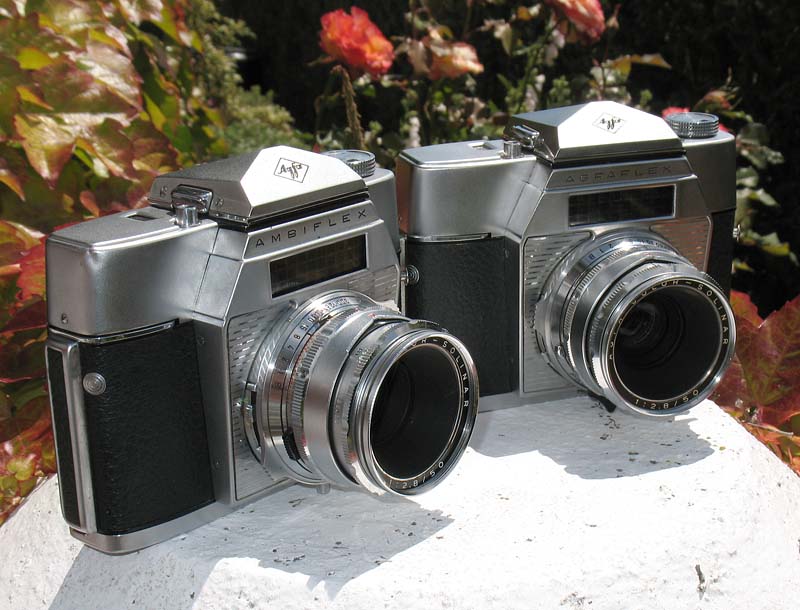Chris's camera pages
Agfa Ambiflex II & Agfaflex IV
Manufactured around 1960 these heavy, well-made, and robust cameras were Agfa's top-of-the-line 35mm models. They were fitted with an interchangeable prism finder, a four-element Agfa Color-Solinar 50mm f/2.8 standard lens, and they have Prontor Reflex 1 to 1/300 second shutters.

These cameras were sold as Agfaflex in the States and as Ambiflex elsewhere, but are otherwise identical, differing only in the name above the selenium cell on the front.
Lenses of other focal lengths available to suit these cameras were the 35mm f/3.4 Color-Ambion, the 90mm f/3.4 Color-Telinear and the 135mm f/4.0 Color-Telinear.
The puzzling business of determining exactly which Colorflex, Agfaflex, or Ambiflex camera you have is really quite simple. In the States, all the models were called Agfaflex, elsewhere the cameras were called either Colorflex or Ambiflex depending on model.
There are really only two cameras, and the model numbers, which were never marked on the cameras, were assigned depending on which lens and finder they have.
The first type of camera has a fixed lens and an uncoupled exposure meter. If fitted with a waist-level finder this camera was called an Agfaflex I in the States and was called a Colorflex I in other markets. If the same camera had an eye-level prism finder instead, then camera was called an Agfaflex II in the States and a Colorflex II elsewhere.
The second type of camera has an interchangeable lens and a coupled exposure meter. This more advanced model, if fitted with a waist-level finder and a Color-Solinar f/2.8 50mm lens, was called an Agfaflex III in the States and was called an Ambiflex I elsewhere. When fitted with an eye-level prism finder and the same lens, the camera was called an Agfaflex IV or an Ambiflex II.
The most highly-specified version of this type of camera was called an Agfaflex V or an Ambiflex III. It had an eye-level prism finder, and had an f/2.0 55mm Color-Solagon lens instead of the f/2.8 Color-Solinar.
Agfa Agfaflex models III to V instruction manual on Mike Butkus's excellent website.